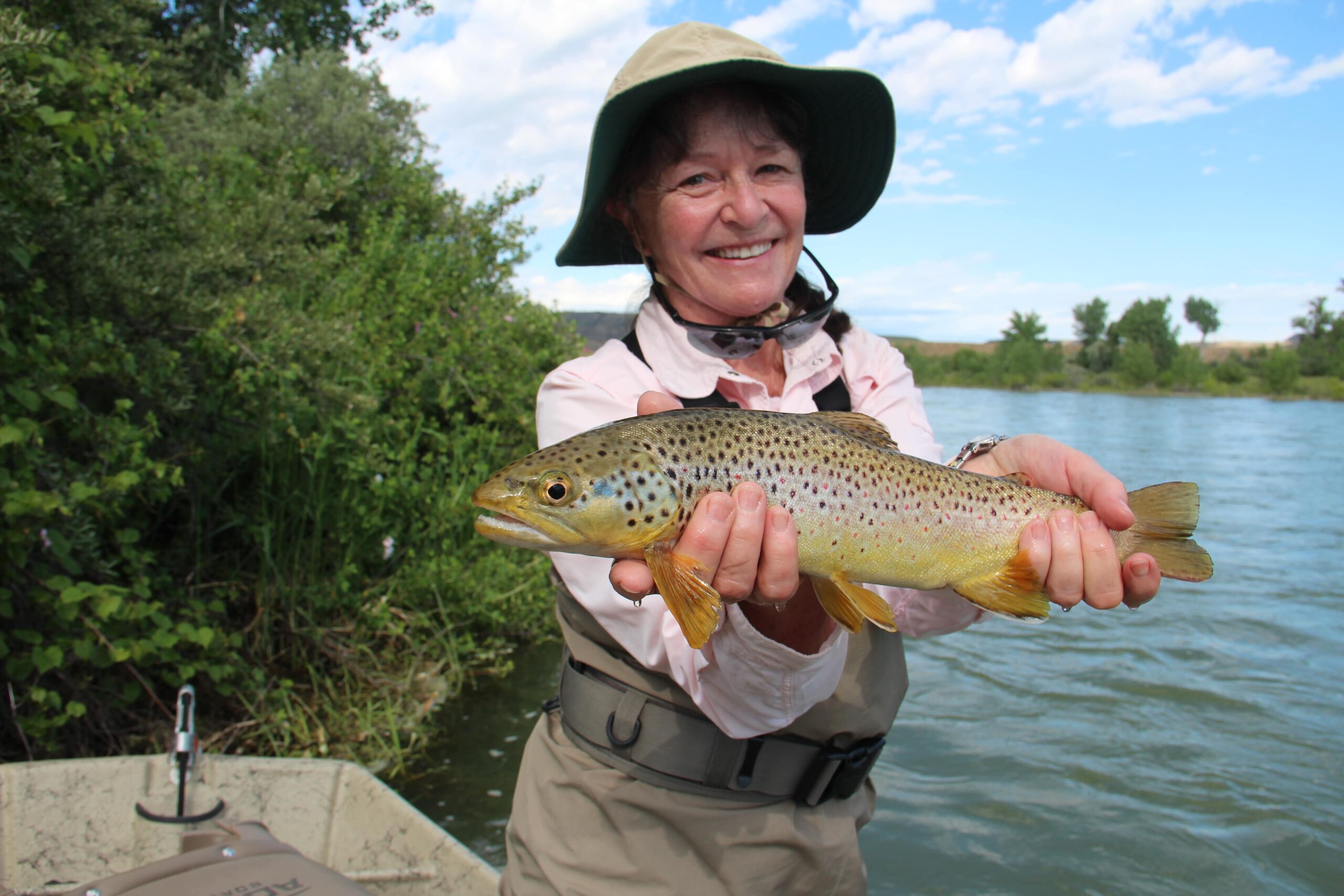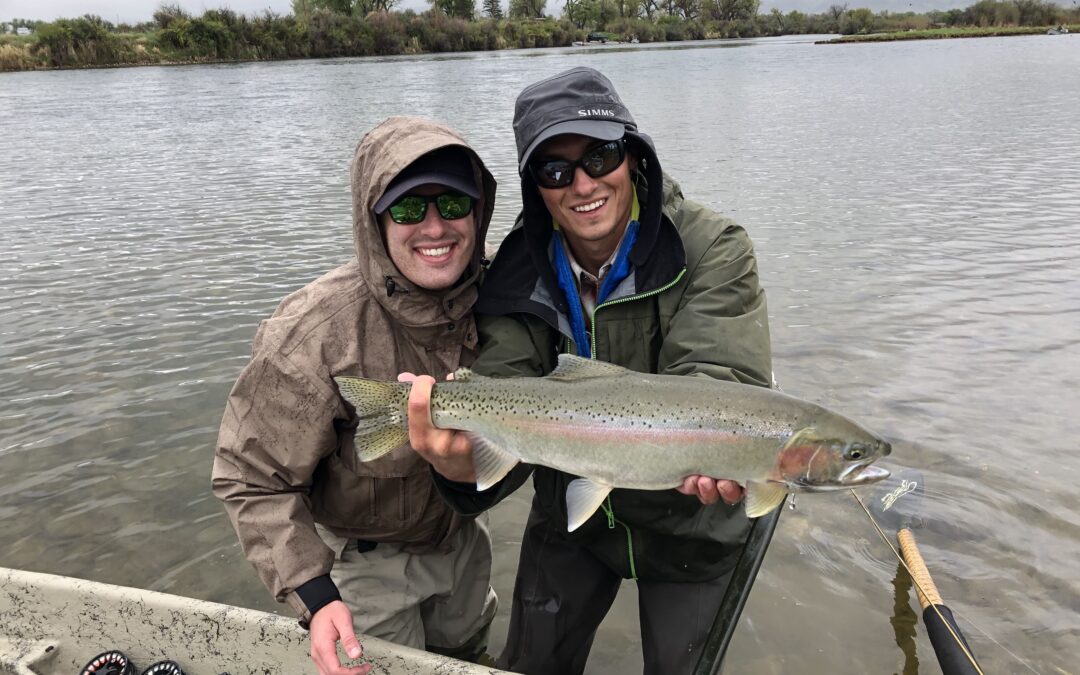May has always been my favorite month to guide the Big Horn. The fish are fresh, the rainbows are on the prowl putting on the pre and post spawn feed. And the brown trout are flushed out eating bugs in buckets, along shelf lines and in the tail outs. With water temperatures in the mid 40’s, the fish are feeding throughout the day and reach peak activity in the early afternoon. We also get to see our first real hatches of the season with blue wings already emerging and the fish taking notice.
Current water temperatures are in the mid to low 40’s with flows at 2,000 CFS. These set of conditions lends itself to both the boat and wade fisherman. My favorite way to approach these flows is boat fishing down to the wade spots. Find the right shelf and your day is made and everything else is gravy. Needless to say, we don’t eat dry potatoes in May on the ‘Horn.
With the recent low water year, we have seen a huge increase in fish size with guides hauling in tuna fish shaped trout every day. Successful spawns the past two seasons have begun to bolster the trout per mile numbers and these “crowd pleasers” fill the void between the plus sized trout that currently prowl the river.

Right now, we are taking fish on sowbug imitations, with the pink beaded variant providing impressive action. In the morning, anglers can look to the soft lake-like water and expect to find fish eating pupating midges in brown, tan, black, and red. As the day progresses, the beatis nymphs begin to become active and fish move to the shelves where these insects live. Beatis are unique in their exceptional swimming ability. Swinging an emerger at the end of a drift can provide some exhilarating grabs and is a mandatory part of my wade nymphing presentation. We keep our eyes peeled on overcast days for the rhythmic sipping of trout on top.
The spring streamer fishing has brought some nice fish to hand and should only improve into June with warmer water and rainbow fry showing up in the water column.

